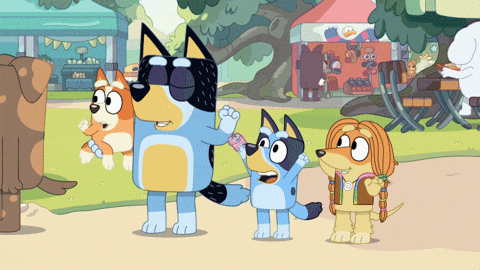- Write Like You Mean It
- Posts
- Use these 3 storytelling plots to inspire and motivate
Use these 3 storytelling plots to inspire and motivate
With examples of when to use each.
I’m taking a while to read Made to Stick, Dan and Chip Heath’s book about why some ideas take hold and others don’t.
Not because it’s long, but because it has heaps of compelling ideas that can up your storytelling game whether you’re a marketer, speaker, business owner, creator, CEO, or, well, just a human.
Dan and Chip Heath sifted through hundreds of inspirational stories—stories they define as ones that motivate, uplift and energise—and pulled out three major plots that can be used when wanting to inspire people.
In this issue, we’ll look at exactly what these plots are and, crucially, in which scenarios to use them.
1. The Challenge Plot
What is it?
The Challenge Plot is the classic three-act structure that you’ll find in almost every Hollywood film: The hero overcomes a huge challenge and triumphs, usually against the odds.
The Challenge Plot is essentially the classic hero’s journey, but there are different variations of it, e.g. the rags to riches story and the much-loved underdog story.
What each Challenge Plot story has in common is that the obstacles seem insurmountable to the hero (and reader/viewer/listener) to begin with, but inevitably these challenges are overcome.
What effect does it have?
The Challenge plot is inspiring. As purpose-driven writers and marketers, we can use the Challenge Plot when we want to tap into this vein of inspiration to speak to people’s sense of courage, perseverance and hope.

Bottom line: Challenge Plots inspire us to act.
What to be careful of
We don’t have to use the Challenge Plot in an overly dramatic way. I write about framing stories in an ethical and effective way here.
Our aim isn’t to ham up our stories so they read like Hollywood scripts—and we need to be very careful of depicting our organisation as some sort of saviour.
How to use the Challenge Plot:
Characters and goals:
Introduce a relatable character facing a specific situation or goal
Make their desires drive the narrative
Obstacles and tension:
The protagonist encounters barriers and tension builds
Things often get worse before they get better
Climax and triumph:
The action peaks, leading to a climactic moment
Our hero triumphs, providing emotional payoff
That sounds like it’s going to be a long story, but it needn’t be. Once you get good at recognising a good Challenge Plot story when you see one, you could write it up in a social media post, with a line for each of the points above.
(Fictional) example
Try creating a social media post from this potential Challenge Plot:
Wellwishes is working to provide clean water in a village where there has been ongoing drought. One of their volunteers, Jess, has ancestors that used to live in the area and she’s intent on building a well. Jess faces hurdle after hurdle of bureaucracy, combined with limited resources. Through resilience, perseverance and community support, Jess builds a well that provides clean water for the village.
When to use
Volunteer recruitment
Fundraising appeals
Impact stories
Landing pages
2. The Connection Plot
What is it?
The Connection Plot is subtle yet powerful. It unites people and reveals universal human experiences through small, specific events.
“[The Connection Plot is] a story about people who develop a relationship that bridges a gap—racial, class, ethnic, religious, demographic, or otherwise.”
What effect does it have?
Connection Plots are about our relationships with other people. They inspire us in a social way, making us want to be more tolerant of each other and work together for the ultimate good.
What to be careful of
When done right, Connection Plot stories resonate deeply, but they can easily become overly emotional or manipulative. As writers, we must tread a careful line between connection and deception.
How to use the Connection Plot:
Small events with big meaning:
Start with a seemingly insignificant situation or event
Look for connections to broader human experiences
Surprise or epiphany:
Add a twist—a surprise or discovery—that elevates the story
The meaning becomes profound
Human connections:
Show the relationships between people in the story
Example
Believe it or not, this ad from Google.👇️
When to use it
Newsletters/blog stories
Impact reports
Testimonials
If you work in the content team at Google 😁
3. The Creativity Plot
What is it?
The Creativity Plot celebrates ingenuity, persistence and unexpected solutions. It’s about solving problems in an innovative way, often with a dash of good fortune thrown in.
What effect does it have?
The Creativity Plot inspires us to look outside of norms and do something different. As purpose-driven writers, we can use this plot to showcase innovation and resourcefulness and to inspire people to work with us towards a common goal.

What to be careful of
The context in which the problem or challenge exists isn’t usually transformed overnight, so, where applicable, we should use the Creativity Plot to show examples of innovative ways problems can be solved, while keeping in mind the wider social and political context.
How to use the Creativity Plot:
Challenges and ingenuity:
Present a challenge or problem
The character uses creativity to find a solution
Persistence and discovery:
Show determination and setbacks
The breakthrough moment leads to a surprising resolution
Universal themes:
Connect the specific problem to broader themes
Example
The folks at Practical Action are reducing harmful emissions and indoor air pollution in Nepal by using digital technologies and collaborating across sectors. Their solution? eCookers. Read more here.
When to use it
Product launches
Innovation stories
Campaigns for change
That’s your lot for this week. Let me know what you thought of this issue in the poll below. 👇️
Reply